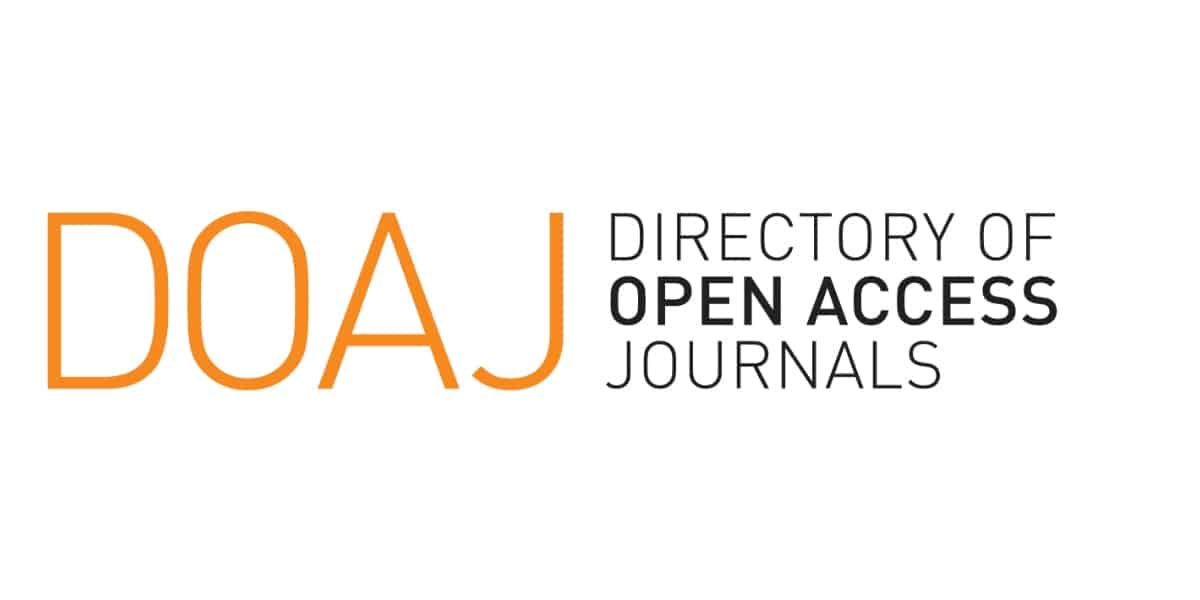Analisis Dinamika Penelitian Pencemaran Air Sungai berdasarkan Studi Bibliometrik 10 tahun terakhir
Keywords:
Bibliometrik, VOSviewer, Pencemaran air sungai, Kualitas air, MikroplastikAbstract
This study analyses the research dynamics on river water pollution over the last decade (2014-2024) using bibliometric analysis. Data were collected using Publish or Perish software with Google Scholar as the main source, using keywords such as 'river pollution', 'river water quality', 'river contamination' and 'river water pollution'. Articles published between 2014 and 2024 were selected, resulting in a total of 1,000 relevant publications. The bibliometric analysis was conducted using VOSviewer version 1.6.20, which allowed mapping of research trends and visualisation of key themes through network, overlay and density visualisation. The results identified five major clusters in river pollution research, with three dominant themes: "water quality index", "metal pollution" and "microplastics". The overlay visualisation showed an increasing focus on emerging themes such as urbanisation and climate change since 2017, and microplastics as a major concern since 2019. This bibliometric analysis provides valuable insights to guide future research by identifying trends and gaps in river pollution studies. It also supports the development of evidence-based environmental policies and highlights the need for interdisciplinary collaboration to effectively address pressing water pollution challenges.
References
[1] Z. W. Kundzewicz, “Hydrosphere,” Encycl. Ecol. Five-Volume Set, vol. 1–5, pp. 1923–1930, 2008, doi: 10.1016/B978-008045405-4.00740-0.
[2] Nathanson, “water pollution,” Water Pollut., pp. 1–4, 2024.
[3] S. Madhav et al., “Water Pollutants: Sources and Impact on the Environment and Human Health,” no. March 2021, pp. 43–62, 2020, doi: 10.1007/978-981-15-0671-0_4.
[4] P. Babuji, S. Thirumalaisamy, K. Duraisamy, and G. Periyasamy, “Human Health Risks due to Exposure to Water Pollution: A Review,” Water (Switzerland), vol. 15, no. 14, pp. 1–15, 2023, doi: 10.3390/w15142532.
[5] E. Yogafanny, “Pengaruh Aktifitas Warga di Sempadan Sungai terhadap Kualitas Air Sungai Winongo,” J. Sains &Teknologi Lingkung., vol. 7, no. 1, pp. 29–40, 2015, doi: 10.20885/jstl.vol7.iss1.art3.
[6] H. Sahabuddin, D. Harisuseno, and E. Yuliani, “Analisa status mutu air dan daya tampung beban pencemaran sungai wanggu kota kendari,” J. Tek. Pengair., vol. 5, pp. 19–28, 2018.
[7] R. Yati, “Rumah Tangga Dan Dampaknya Bagi Masyarakat,” Permasalahan Pencemaran Sungai Akibat Akt. Rumah Tangga dan Dampaknya Bagi Masy., vol. 1, 2021.
[8] M. Airiken, F. Zhang, N. W. Chan, and H. te Kung, “Assessment of spatial and temporal ecological environment quality under land use change of urban agglomeration in the North Slope of Tianshan, China,” Environ. Sci. Pollut. Res., vol. 29, no. 8, pp. 12282–12299, 2022, doi: 10.1007/s11356-021-16579-3.
[9] V. H. Pauna, E. Buonocore, M. Renzi, G. F. Russo, and P. P. Franzese, “The issue of microplastics in marine ecosystems: A bibliometric network analysis,” Mar. Pollut. Bull., vol. 149, no. August, p. 110612, 2019, doi: 10.1016/j.marpolbul.2019.110612.
[10] R. P. Singh et al., “A holistic review on trend, occurrence, factors affecting pesticide concentration, and ecological risk assessment,” Environ. Monit. Assess., vol. 195, no. 4, 2023, doi: 10.1007/s10661-023-11005-2.
[11] H. Xu, Q. Gao, and B. Yuan, “Analysis and identification of pollution sources of comprehensive river water quality: Evidence from two river basins in China,” Ecol. Indic., vol. 135, p. 108561, 2022, doi: 10.1016/j.ecolind.2022.108561.
[12] N. Morin-Crini et al., “Worldwide cases of water pollution by emerging contaminants: a review,” Environ. Chem. Lett., vol. 20, no. 4, pp. 2311–2338, 2022, doi: 10.1007/s10311-022-01447-4.
[13] S. Rahmawati, D. Wacano, M. Erpinda, and A. Juliani, “Risk level mapping of organophosphate pesticides application in agricultural area of Cangkringan Subdistrict, Yogyakarta, Indonesia,” IOP Conf. Ser. Earth Environ. Sci., vol. 933, no. 1, 2021, doi: 10.1088/1755-1315/933/1/012046.
[14] S. Kasavan, S. Yusoff, M. F. Rahmat Fakri, and R. Siron, “Plastic pollution in water ecosystems: A bibliometric analysis from 2000 to 2020,” J. Clean. Prod., vol. 313, no. June, p. 127946, 2021, doi: 10.1016/j.jclepro.2021.127946.
[15] Z. Linglin, “A bibliometric review of zero waste in the built environment using VOSviewer: evolution, hotspots, and prospects,” Front. Environ. Sci., vol. 11, no. January, pp. 1–16, 2023, doi: 10.3389/fenvs.2023.1326458.
[16] P. G. S. Anggraini and I. Yuadi, “Tren Publikasi Climate Change (Perubahan Iklim) Tahun 2020-2023 Pada Scopus,” JIPI (Jurnal Ilmu Perpust. dan Informasi), vol. 8, no. 2, p. 213, 2023, doi: 10.30829/jipi.v8i2.15917.
[17] F. Yang and D. Qiu, “Exploring coal spontaneous combustion by bibliometric analysis,” Process Saf. Environ. Prot., vol. 132, pp. 1–10, 2019, doi: 10.1016/j.psep.2019.09.017.
[18] C. Zhou, R. Bi, C. Su, W. Liu, and T. Wang, “The emerging issue of microplastics in marine environment: A bibliometric analysis from 2004 to 2020,” Mar. Pollut. Bull., vol. 179, no. November 2021, p. 113712, 2022, doi: 10.1016/j.marpolbul.2022.113712.
[19] H. Li, Y. Xiang, W. Yang, T. Lin, Q. Xiao, and G. Zhang, “Green roof development knowledge map: A review of visual analysis using CiteSpace and VOSviewer,” Heliyon, vol. 10, no. 3, p. e24958, 2024, doi: 10.1016/j.heliyon.2024.e24958.
[20] S. Kasavan, S. Yusoff, N. C. Guan, N. S. K. Zaman, and M. F. R. Fakri, “Global trends of textile waste research from 2005 to 2020 using bibliometric analysis,” Environ. Sci. Pollut. Res., vol. 28, no. 33, pp. 44780–44794, 2021, doi: 10.1007/s11356-021-15303-5.
[21] G. Badareu, N. M. Doran, S. Puiu, R. M. Bădîrcea, and A. G. Manta, “Is the Relationship between Corporate Social Responsibility, Environment and Energy Sufficiently Debated Nowadays?,” Energies, vol. 16, no. 8, 2023, doi: 10.3390/en16083405.
[22] Y. J. Huang, S. Cheng, F. Q. Yang, and C. Chen, “Analysis and Visualization of Research on Resilient Cities and Communities Based on VOSviewer,” Int. J. Environ. Res. Public Health, vol. 19, no. 12, 2022, doi: 10.3390/ijerph19127068.
[23] A. Bathaei and D. Štreimikienė, “A Systematic Review of Agricultural Sustainability Indicators,” Agric., vol. 13, no. 2, 2023, doi: 10.3390/agriculture13020241.
[24] J. D. Broome, D. Cook, and B. Davíðsdóttir, “Heavenly lights: An exploratory review of auroral ecosystem services and disservices,” Ecosyst. Serv., vol. 67, no. April, 2024, doi: 10.1016/j.ecoser.2024.101626.
[25] W. Mengist, T. Soromessa, and G. Legese, “Method for conducting systematic literature review and meta-analysis for environmental science research,” MethodsX, vol. 7, p. 100777, 2020, doi: 10.1016/j.mex.2019.100777.
[26] Z. Azzahrawati, Riche, and Ardiansyah, “Analisis Bibliometrik Tren Penelitian Literasi Pada Lansia dengan Menggunakan VOSviewer.” Jurnal Dokumentasi dan Informasi, 2023.
[27] M. Davtalab, S. Byčenkienė, and I. Uogintė, “Global research hotspots and trends on microplastics: a bibliometric analysis,” Environ. Sci. Pollut. Res., vol. 30, no. 49, pp. 107403–107418, 2023, doi: 10.1007/s11356-023-27647-1.
[28] H. Nobanee et al., “A bibliometric analysis of sustainability and risk management,” Sustain., vol. 13, no. 6, pp. 1–17, 2021, doi: 10.3390/su13063277.
[29] T. Kataoka, Y. Nihei, K. Kudou, and H. Hinata, “Assessment of the sources and inflow processes of microplastics in the river environments of Japan,” Environ. Pollut., vol. 244, pp. 958–965, 2019, doi: 10.1016/j.envpol.2018.10.111.
[30] N. Badola, F. Sobhan, and J. S. Chauhan, “Microplastics in the River Ganga and its fishes: Study of a Himalayan River,” Sci. Total Environ., vol. 901, no. May, p. 165924, 2023, doi: 10.1016/j.scitotenv.2023.165924.
[31] L. Kelleher et al., “Microplastic accumulation in endorheic river basins – The example of the Okavango Panhandle (Botswana),” Sci. Total Environ., vol. 874, no. March, p. 162452, 2023, doi: 10.1016/j.scitotenv.2023.162452.
[32] D. Falahudin et al., “The first occurrence, spatial distribution and characteristics of microplastic particles in sediments from Banten Bay, Indonesia,” Sci. Total Environ., vol. 705, p. 135304, 2020, doi: 10.1016/j.scitotenv.2019.135304.
[33] P. Lestari, Y. Trihadiningrum, B. A. Wijaya, K. A. Yunus, and M. Firdaus, “Distribution of microplastics in Surabaya River, Indonesia,” Sci. Total Environ., vol. 726, p. 138560, 2020, doi: 10.1016/j.scitotenv.2020.138560.
[34] M. Sharma et al., “The state of the Yamuna River: a detailed review of water quality assessment across the entire course in India,” Appl. Water Sci., vol. 14, no. 8, pp. 1–24, 2024, doi: 10.1007/s13201-024-02227-x.
[35] C. Bhan, N. Kumar, and V. Elangovan, “Microplastics pollution in the rivers, its source, and impact on aquatic life: a review,” Int. J. Environ. Sci. Technol., no. 0123456789, 2024, doi: 10.1007/s13762-024-05846-8.
[36] J. Fan, L. Zou, T. Duan, L. Qin, Z. Qi, and Jiaoxia Sun, “Occurrence and distribution of microplastics in surface water and sediments in China’s inland water systems: A critical review,” J. Clean. Prod., vol. 331, no. December 2021, p. 129968, 2022, doi: 10.1016/j.jclepro.2021.129968.
[37] S. Giri, “Water quality prospective in Twenty First Century: Status of water quality in major river basins, contemporary strategies and impediments: A review,” Environ. Pollut., vol. 271, p. 116332, 2021, doi: 10.1016/j.envpol.2020.116332.
[38] R. Noor et al., “A comprehensive review on water pollution, South Asia Region: Pakistan,” Urban Clim., vol. 48, no. February 2022, p. 101413, 2023, doi: 10.1016/j.uclim.2023.101413.
[39] I. K. Konstantinou, D. G. Hela, and T. A. Albanis, “The status of pesticide pollution in surface waters (rivers and lakes) of Greece. Part I. Review on occurrence and levels,” Environ. Pollut., vol. 141, no. 3, pp. 555–570, 2006, doi: 10.1016/j.envpol.2005.07.024.
[40] S. S. Chen, I. A. Kimirei, C. Yu, Q. Shen, and Q. Gao, “Assessment of urban river water pollution with urbanization in East Africa,” Environ. Sci. Pollut. Res., vol. 29, no. 27, pp. 40812–40825, 2022, doi: 10.1007/s11356-021-18082-1.
Downloads
Published
Issue
Section
License
Copyright (c) 2024 Mia Erpinda, Nur Faizaturrohmah, Suci Wulandari (Author)

This work is licensed under a Creative Commons Attribution 4.0 International License.
















